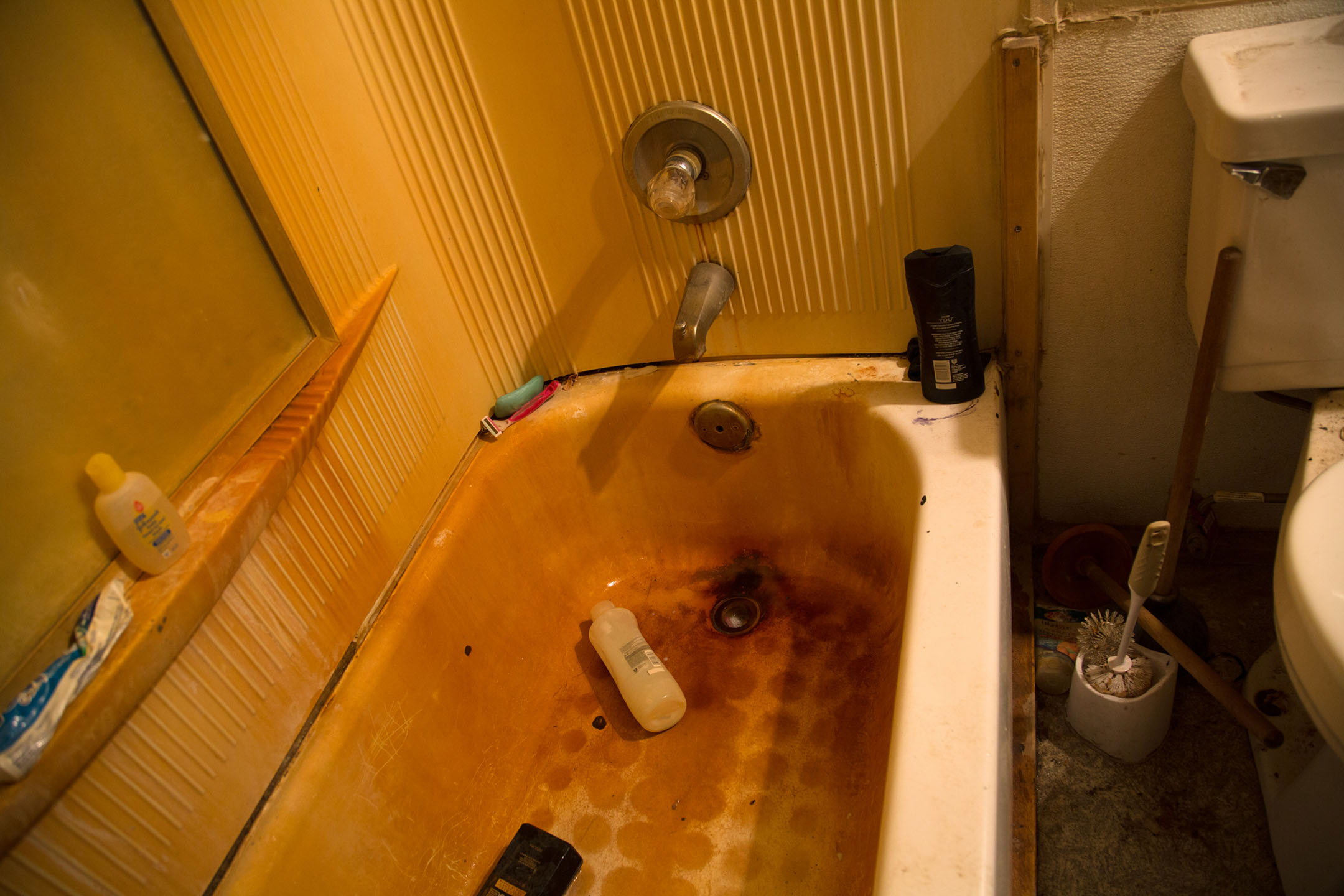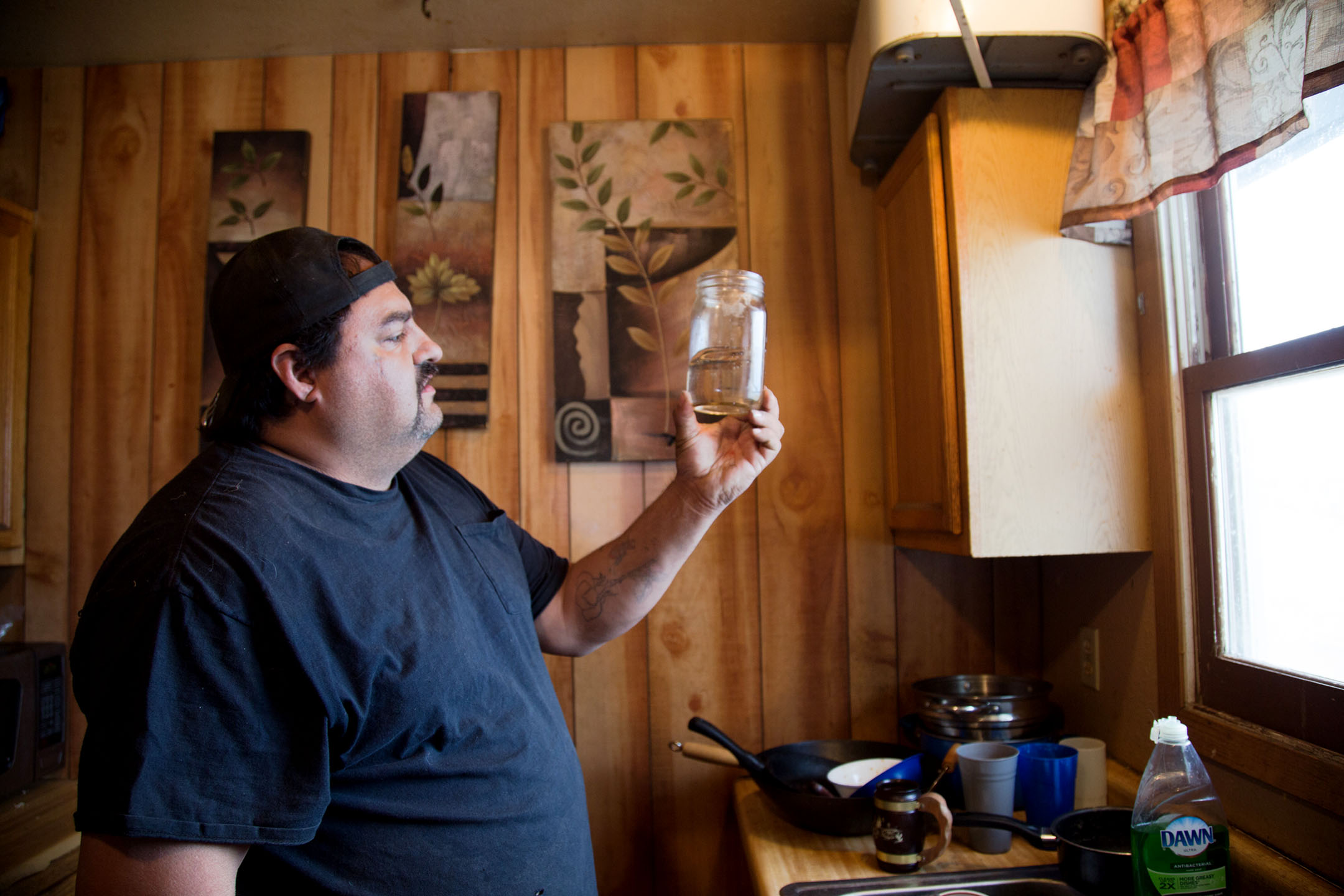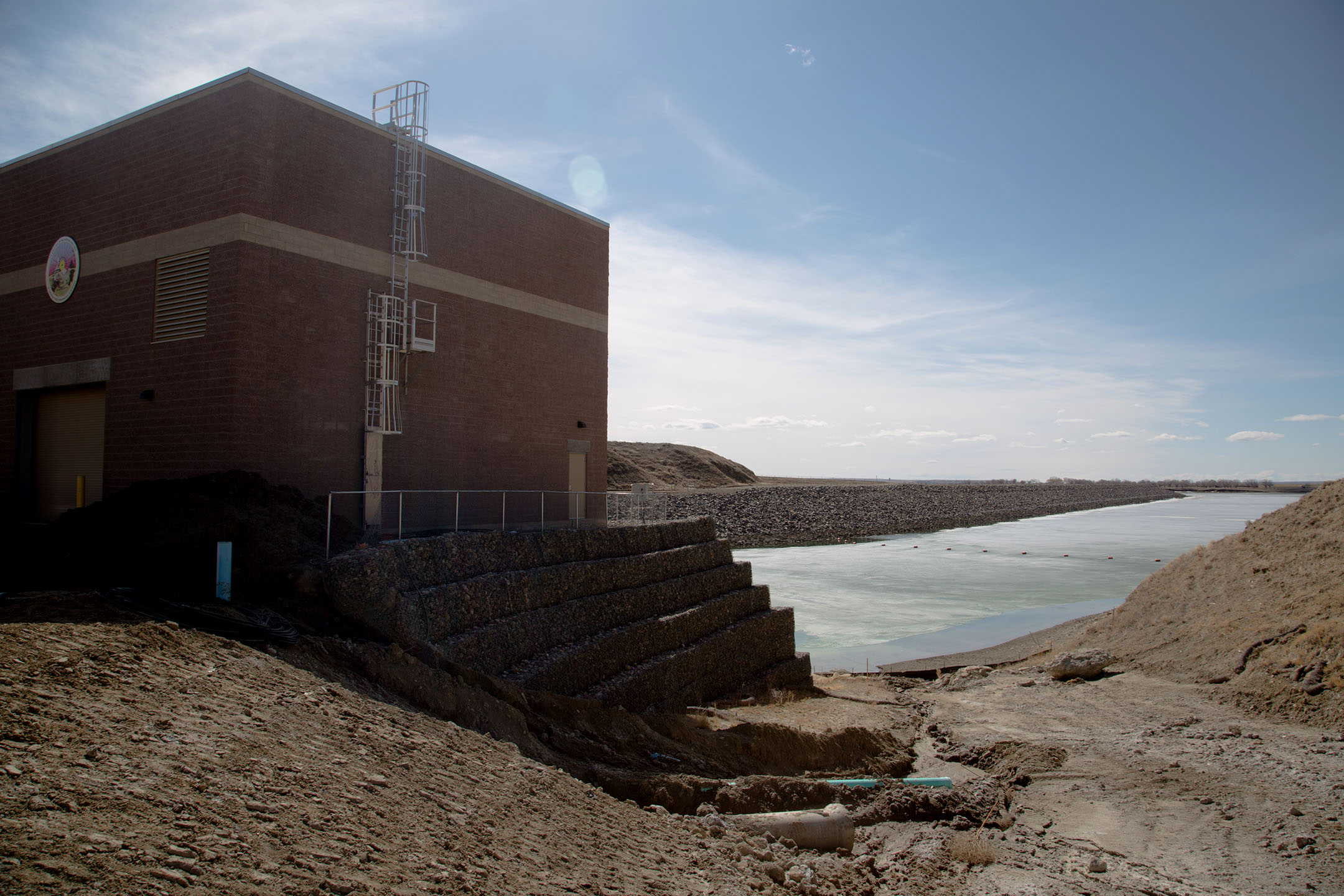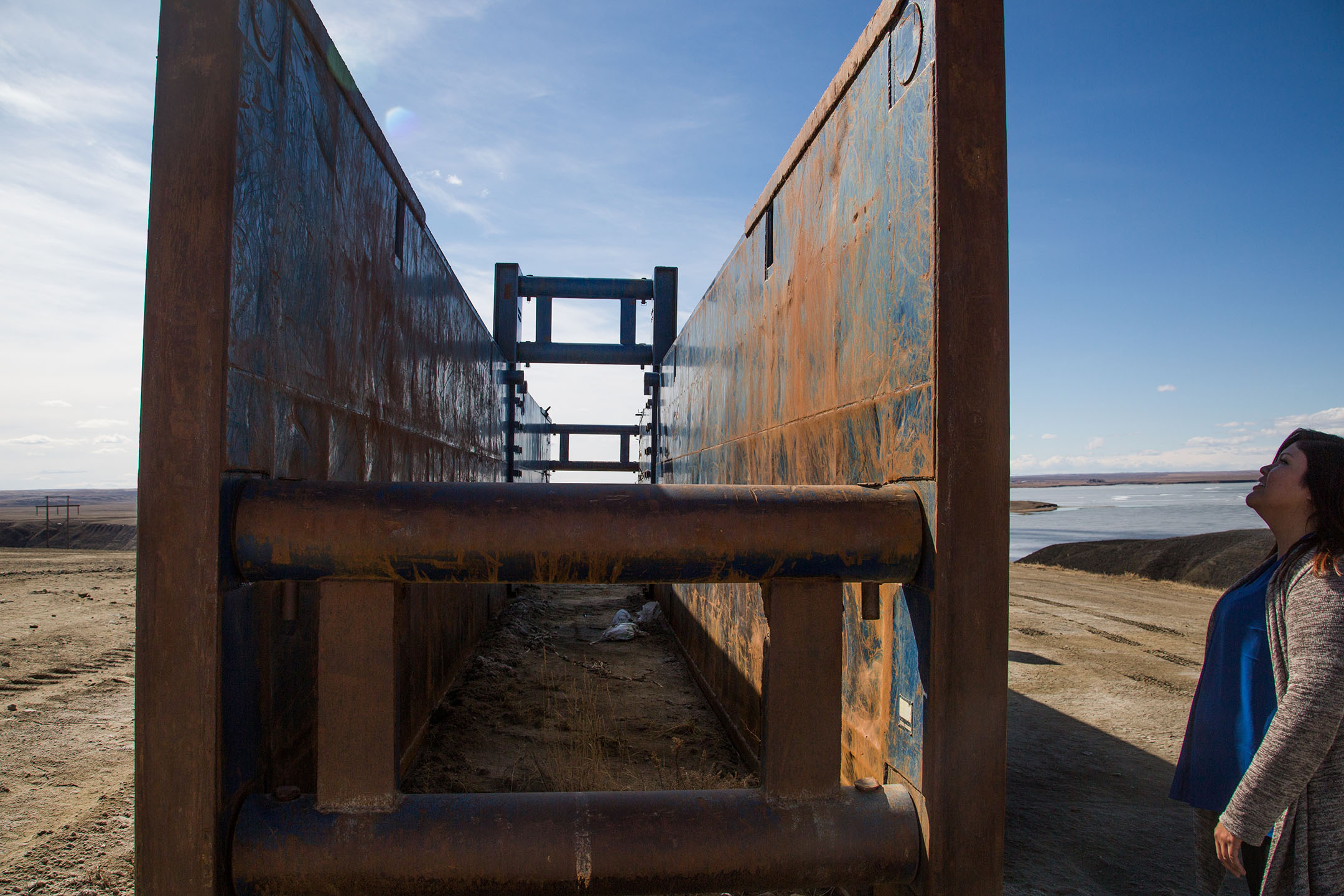Story by Abby Lynes, photos by Chelsea Culp
Every day since December, Leana Wright wakes up and boils a large pot of water on her stove. She drags it to the bathroom and sets it on a stool near the bathtub. She dips in a loofa, and rubs out a soapy lather. Then, she washes her face and body.
She has to be quick or the water will get cold.
It has been months since she’s been able to take a shower in her home. It’s a mundane ritual turned romanticized luxury: to put her hands under the warm water spray and wash her hands and face.
Wright has lived in an aging trailer just up the road from Rocky Boy Agency for 10 years. At least once every year, she loses access to water and has to repair pipes below her trailer. It needs new insulation and a hot water heater.
Part of the problem is the old pipes. But part of it is shaping up to be a community issue.
Wright was one of more than 2,500 people to lose access to clean drinking water this past winter when the reservation’s water system faced its worst break yet, and the loss of water pressure damaged her house’s old, fragile pipes.
Infrastructure on Rocky Boy’s Indian Reservation is in dire need of an upgrade. Aging pipelines continuously fail to deliver water to old, overcrowded homes, leaving varying sections of the reservation without clean drinking water several times a year. On top of that, efforts to build a pipeline to bring water from Lake Elwell have been blocked by funding issues and an embezzlement scandal.
From mid-December to early January this year, the Environmental Protection Agency issued a boil order for the more than 2,500 people on the reservation water system, and Tribal Water Resources scrambled to deliver bottled water to its residents.
The Rocky Boy’s community water system consists of about 700 homes, while 150 to 200 homes are on individual wells. Homes with wells weren’t affected.
It was a cold winter, and rather than pay for the propane to heat their homes, a number of families vacated to spend the season with family and friends. Tribal officials said these families left without shutting off the main water lines into their vacant homes.
Many of the houses on the reservation are not energy efficient. The insulation in Wright’s trailer has fallen apart.
“And it costs money — a lot of money — to fix it,” she said.
Cold temperatures this winter, along with an aging water pipeline system, with low pressure caused pipes to freeze and crack, allowing contaminated groundwater to seep into pipelines.
Enlarge
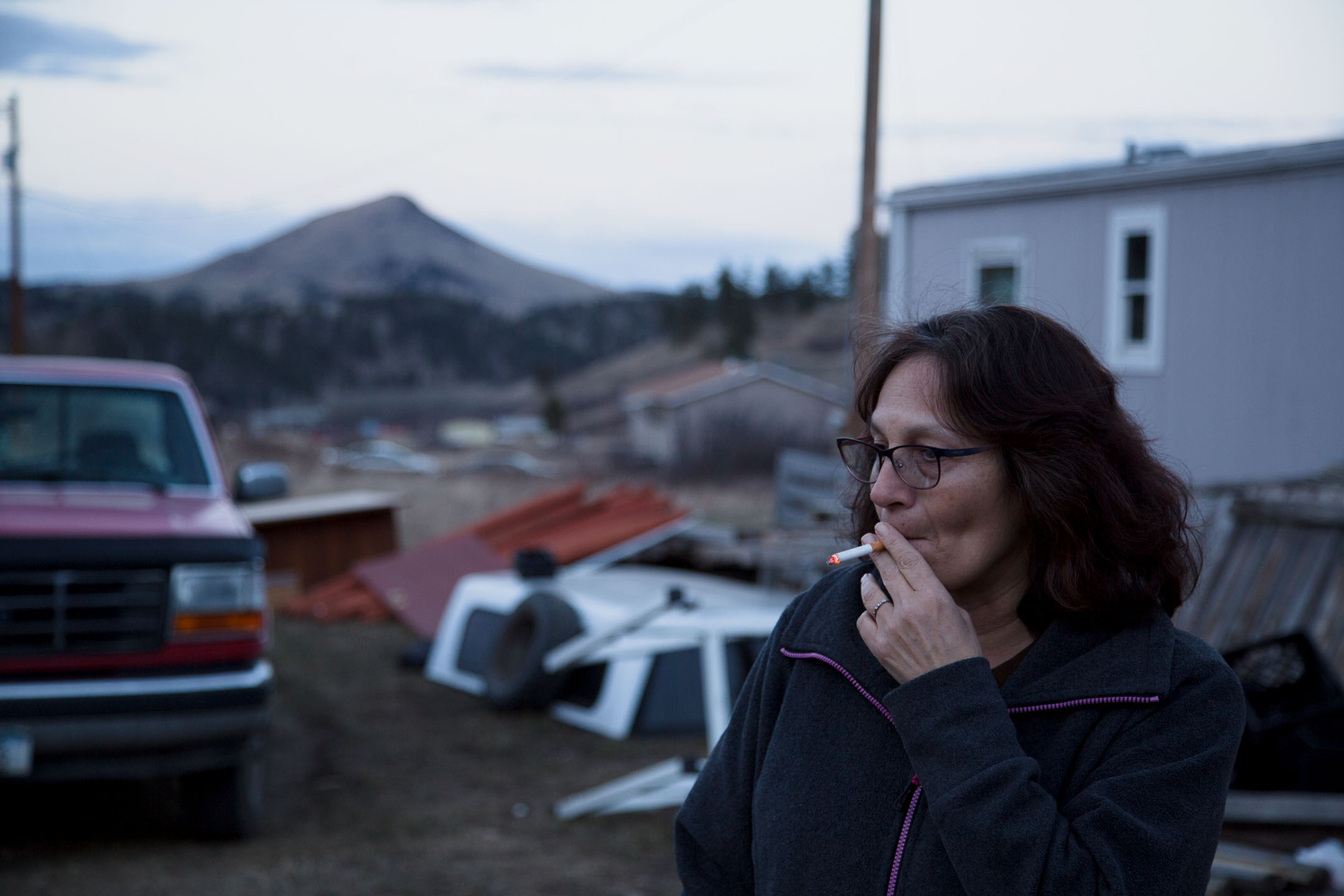
While not an uncommon occurrence in central Montana, the effect was exacerbated by a low supply of source water in the small aquifers scattered across the reservation. This created low pressure in the water system making it easier for pipes to freeze and crack. This tends to affect clusters of homes at a time, either severely decreasing water pressure even more, or wiping out access to water entirely.
Residents on Rocky Boy’s have been left without access to clean drinking water time and time again, and many people don’t trust the tap water enough to drink it. Wright said that even when she does have water flowing in-home, it tends to have a chlorinated taste. Many people buy bottled water.
~-~
The Rocky Boy’s reservation, home of the Chippewa Cree, looks like a severe drought has taken effect. There are no green lawns on the reservation. Children don’t run through sprinklers or swim in pools. The water supply is so low that people can get fined for watering their lawns in the summer. Filling up a pool could completely throw off a neighborhood’s water system, because its storage tank wouldn’t have enough time to replenish itself to deliver water to other houses.
There isn’t enough source water to even have a car wash on Rocky Boy’s. Right now, water is drawn from aquifers across the reservation. It is cleaned and treated and then goes into a storage tank. There’s one storage tank for each neighborhood. From there, it goes to people’s homes. People who are on wells have either opted out of the community water system or have homes too far away to connect to any pipelines.
Enlarge
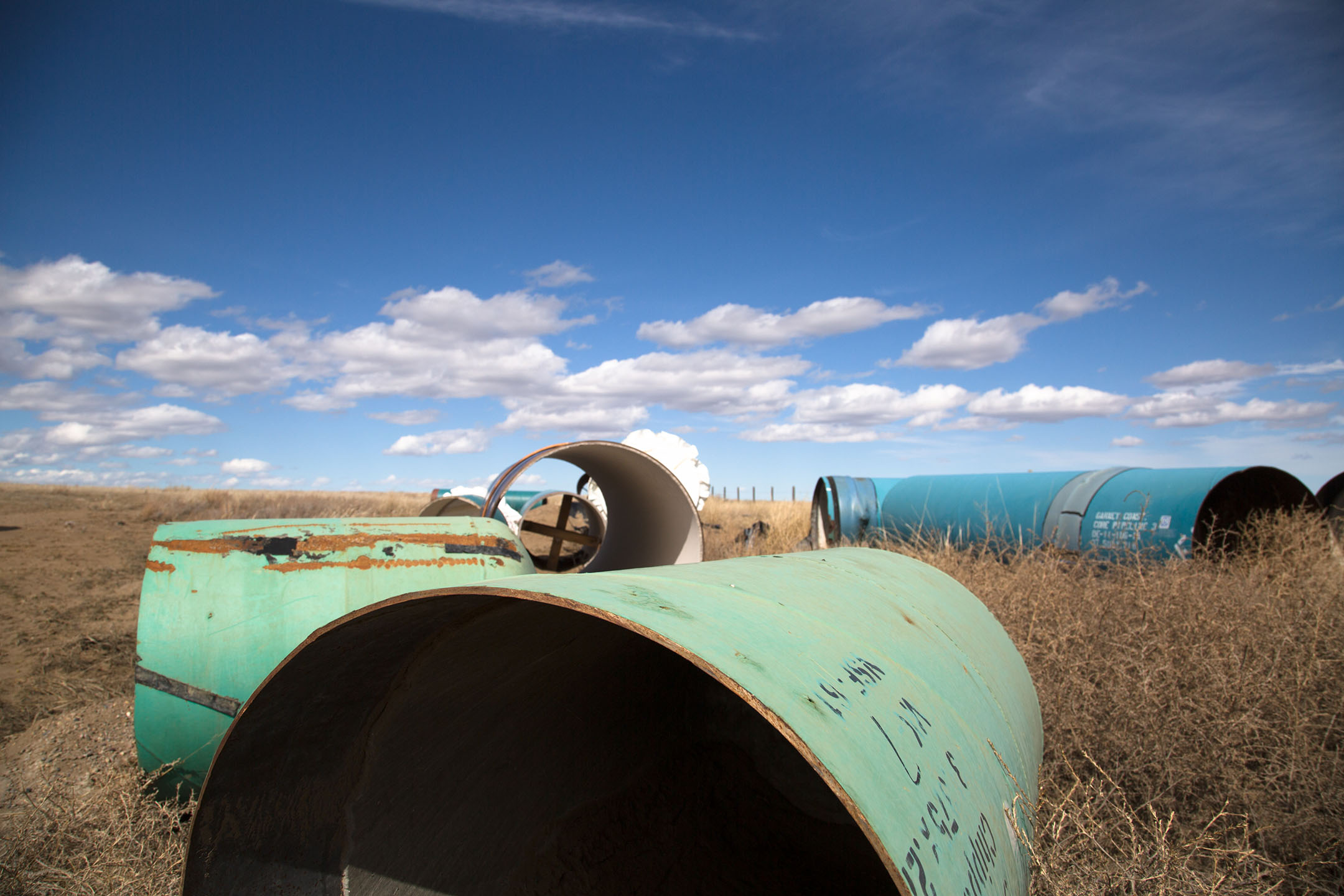
To fix the reservation’s water issues, Tribal Water Resources Director Dustin White has been pushing to finish construction on a pipeline to bring water from Lake Elwell, also called Tiber Resevoir, about 50 miles west, to Rocky Boy’s and surrounding communities in northcentral Montana. It would eliminate the water pressure problem and the water would taste better.
White has been working with tribal councilmen and the Chippewa Cree Construction Corp. to secure funding for the $228 million project that would bring 30.9 million gallons of water per day over from Lake Elwell to Rocky Boy’s.
At the rate at which the project is receiving funding, it won’t get completed in Wright’s lifetime. While tribal officials have managed to secure half of the funding for the project, it took 15 years. The funding mechanism has slowed due in part to a slew of embezzlement convictions. At the rate the funding is being allocated, and as costs continue to rise, White said the project won’t get full funding for another 70 years.
Once the project gets closer to completion, White will apply for grants through the Indian Health Service to upgrade the water system on the reservation itself and get more households who are now using wells on the community water system. Most people on wells don’t have them regularly tested, and water from the lake will be better than any well water, residents say.
At this point, about $160 million is needed to complete the project.
However, in 2013, reports started to surface regarding misspent or missing grant money by the former chief executive officer of the Chippewa Cree Construction Corp., Tony Belcourt.
Federal officials temporarily halted construction of the project in 2013 after a string of allegations against Belcourt that he accepted bribes and kickbacks from consultants and contractors who were awarded federally funded contracts, including federal stimulus aid.
Belcourt was convicted in 2014. He was sentenced to 7.5 years in prison and ordered to pay more than $600,000 to the Chippewa Cree tribe and the IRS.
White and other employees at the company said they were in the dark about the whole thing. White said the tribe has implemented new policies to prevent it from happening again and is ready to move forward.
One thing is clear, though: Rocky Boy’s residents need water now, not in seven decades.
~-~
Leana Wright is one of many people who avoid drinking the tap water on the reservation. It’s not that she doesn’t trust it. The water just isn’t always available to her, and she dislikes how much it tastes of chlorine.
Tribal Water Resources must meet federal chlorine levels standards. Officials say those levels are where they should be. However, Wright said she can taste chlorine in the reservation tap water. Her husband’s socks turn a lighter shade of black in the washing machine, as if washed in bleach, she said.
She buys a lot of bottled water and is very cautious of the water that comes out of her faucets — when it comes out.
“A shower is a luxury,” she said. “Washing your clothes in your own home is a luxury.”
Water is only one component of a larger infrastructure problem on Rocky Boy’s. Many houses on the reservation come from Malmstrom Air Force base in Great Falls. The structures are old and not very energy efficient.
Enlarge
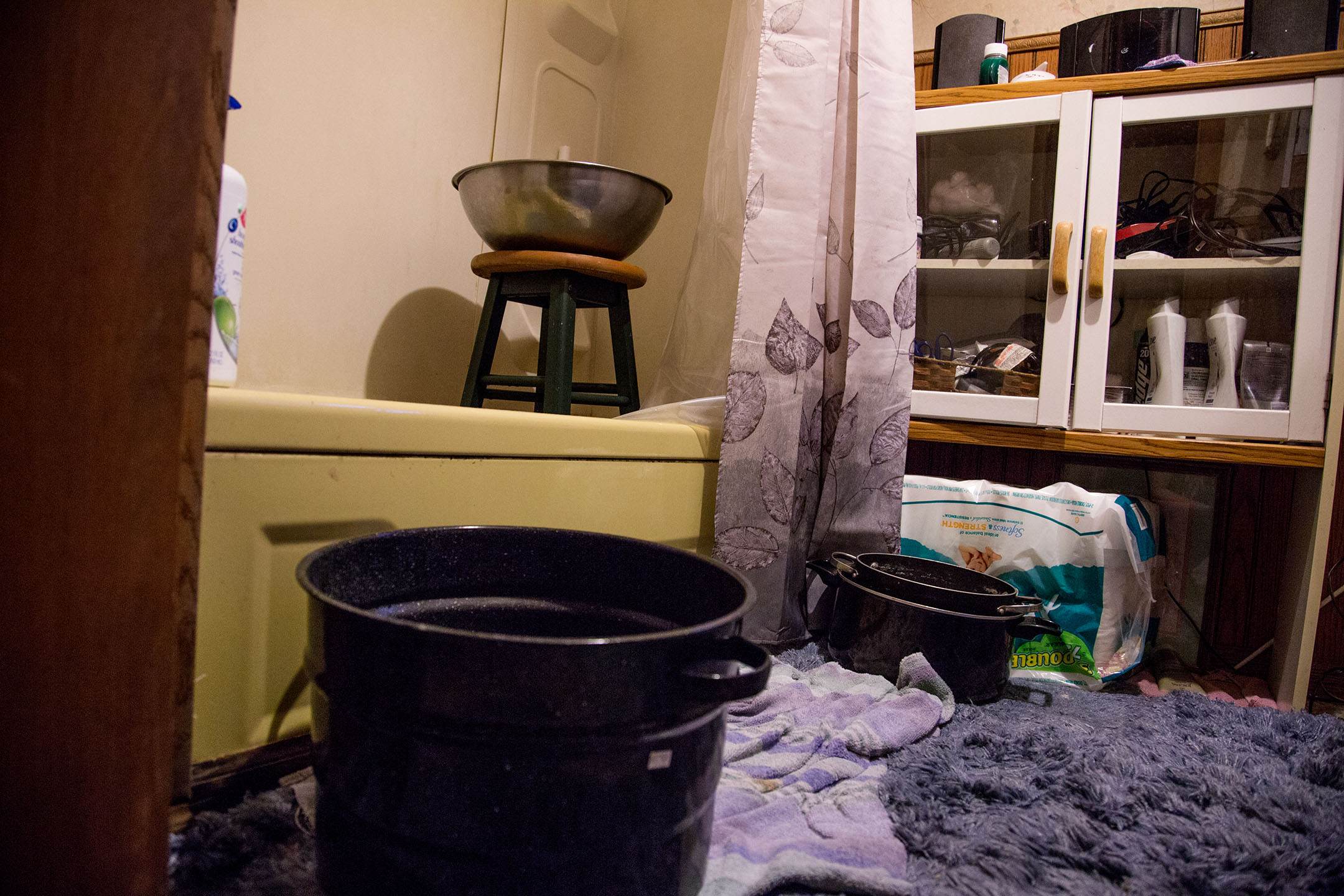
Additionally, the Chippewa Cree Housing Authority has a list of more than 500 people who want low-rent homes.
Housing is only able to provide homes to about 10 families a year, according to Executive Director Ursula Russette.
Building a house independently is expensive which most residents can’t afford. So most people either inherit their houses or wait their turn on the housing authority list. Wright was unusual e, in that she was able to buy her house.
Many people live in overcrowded houses. At one time, Wright had 12 people living in her then-three bedroom home.
It’s common to have two to three families staying in one unit, Russette said. Housing could visit a home where two people live one day, and the next day, it wouldn’t be unusual for another five people to be living there, she said.
~-~
Ira and Pearl Moreno also have a house full to the brim with six kids, one elderly grandfather and six cats. It’s a five-bedroom, two-bathroom house they inherited.
The Morenos have been in their home for nine years, although they’ve only had access to drinking water, via a well, at their house for seven years. They had to negotiate with Housing and Tribal Water Resources for a few years before they could move in.
Enlarge
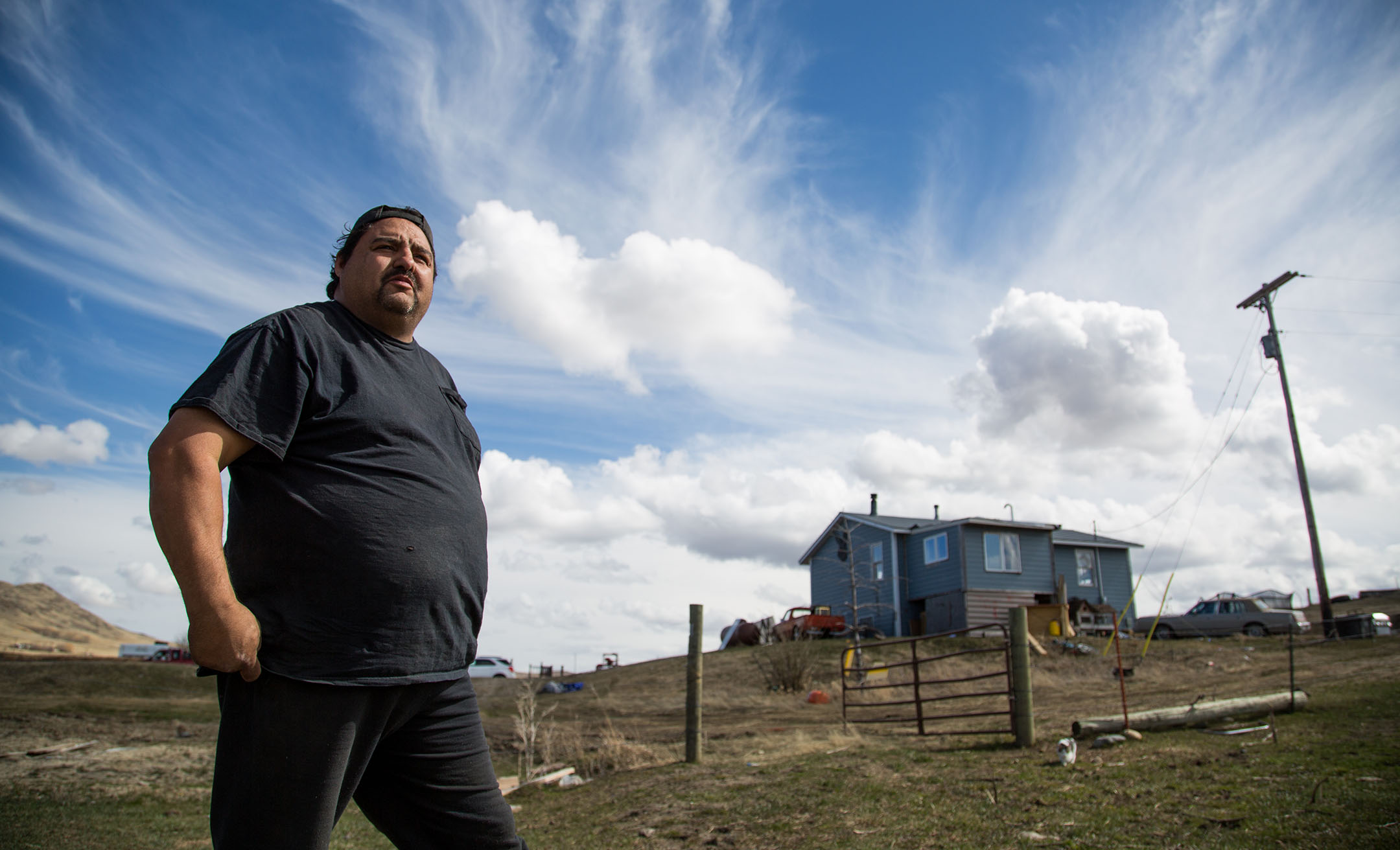
They initially got a well to save money. People on the community water system have to pay a monthly $25 flat fee.
The Morenos also mistrust the community water system because of a contamination case in 2012, when someone broke into a water tank and contaminated the water with wooden boards, concrete and animal feces. Officials didn’t discover the contamination for weeks.
However, even the Morenos’ well water is visibly silty.
Sometimes, Ira Moreno will leave water in a plastic container overnight and there will be a residue the next day. The water leaves a layer of rust over his entire shower, and the Morenos have to use a special cleaner to get it off every three weeks.
Ira Moreno, who admits he hasn’t tested or treated the well water, said it is drinkable. Still, the Morenos tend to rely on bottled water for drinking.
Obtaining the right to live in their house was a lengthy, exhausting ordeal. Though they love their home and have big aspirations for it, including building cabins and a dock on the lake, water is a major component that isn’t working out for them.
If the Tiber Reservoir went through, though, the couple said they would consider getting on the community water system.
~-~
The only thing in the way of completing the Tiber Reservoir pipeline is funding. If the tribe had the funding it needed, the project could be completed in four years.
Russette is planning to go to Washington, D.C. this summer, along with mayors from other communities representing more than 30,000 people in the region that will receive water from the pipeline.
Sen. Jon Tester, D-Mont., said he has helped secure funding for the project in the past, and he’ll continue to push for funding in the future.
“Access to safe, reliable drinking water is fundamental to the health of rural communities and Indian Country,” he said.
Though it’s not quite as bad as on the reservation, infrastructure is aging in communities throughout the region.
Russette went to Montana Tech of the University of Montana on a full-ride engineering scholarship specifically so she could come back to the reservation and work on the Tiber project for the Chippewa Cree Construction Corp.
Keely Barry, an engineer-in-training from a firm in Great Falls, also works on the project. The two hope to see Lake Elwell become tribal trust land.
Enlarge
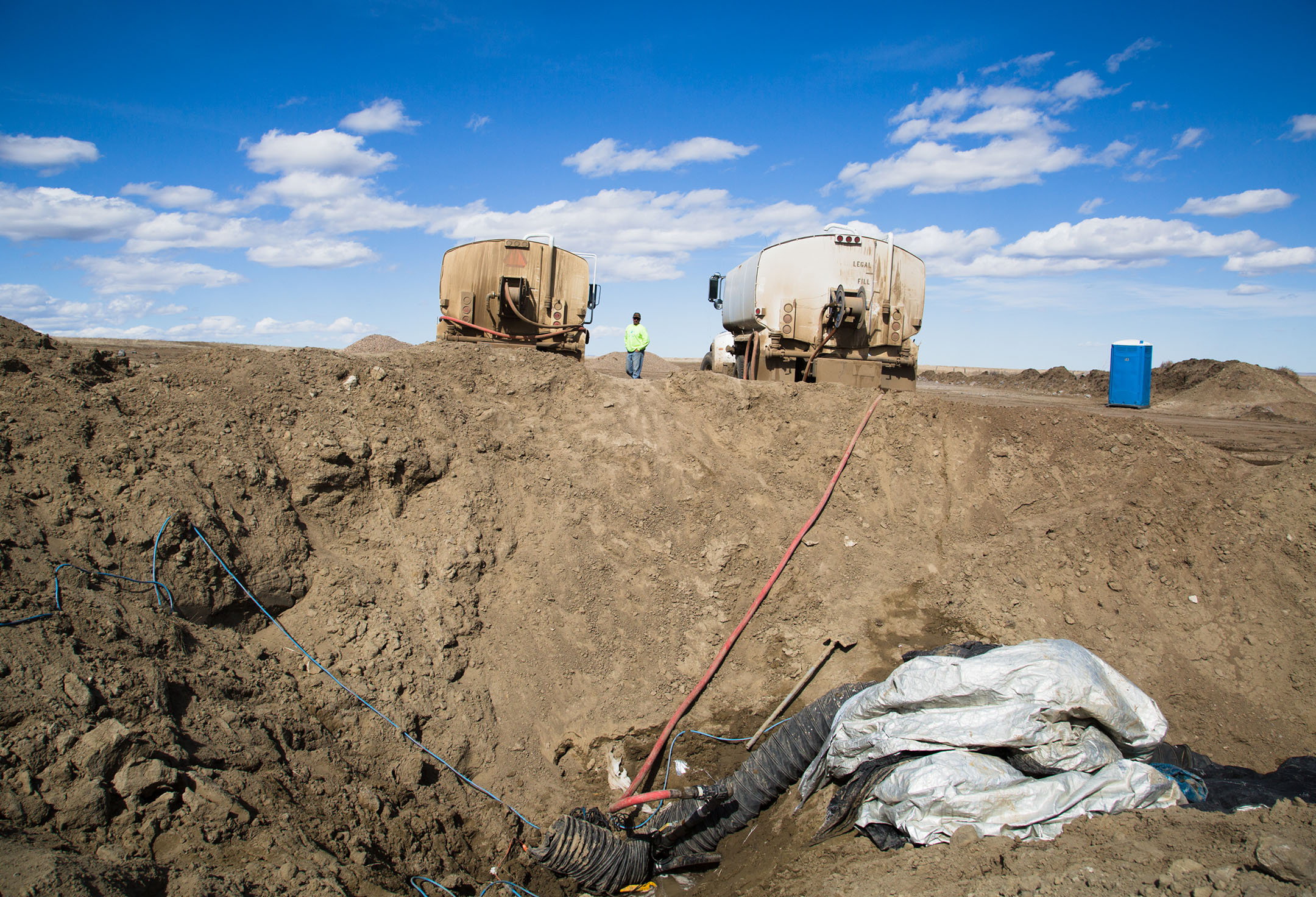
Barry said she and Russette are working on the project to help improve the tribe’s water system, which barely sustains everyone on the reservation even when it’s running perfectly. They want everyone to have reliable access to clean drinking water on the reservation.
Neither wants people to have to spend money on bottled water or limit their intake because they’re afraid to drink from the sinks in their own homes.
“No one should have to live like that,” Berry said.
For past Native News editions visit the archive here.



